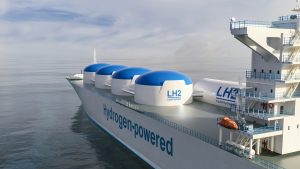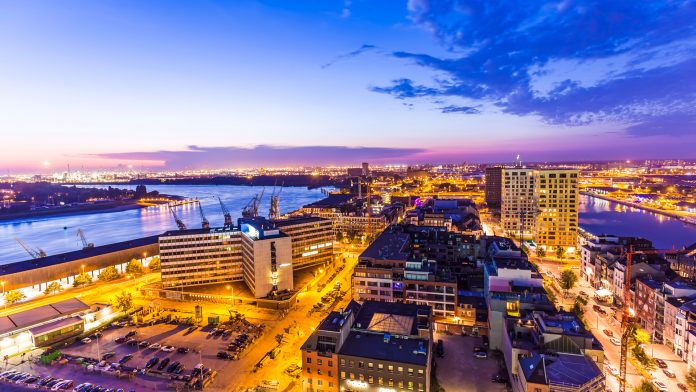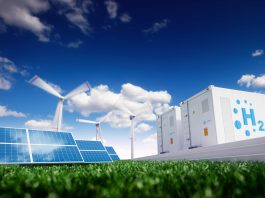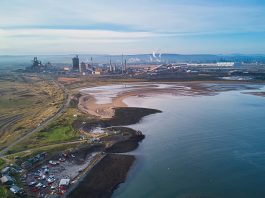Port of Antwerp-Bruges is set to play a vital role in Belgium’s revised hydrogen strategy through the production and importation of green hydrogen.
A revision of Belgium’s federal hydrogen strategy has been proposed by Prime Minister Alexander De Croo during a visit to the Port of Antwerp-Bruges. The amendment contains the development of a federal hydrogen council, which will align with the government’s broader energy objective of achieving climate neutrality. The Port of Antwerp-Bruges will play a crucial role in facilitating Belgium to become the hydrogen hub of Europe, through its strategy and projects for the importation, production, and throughput of green hydrogen.
New insights into green hydrogen’s role in the energy transition
As part of Belgium’s clean energy transition to a carbon-neutral society, the federal hydrogen strategy was approved late last year. Hydrogen has a vital role in the energy transition and is necessary for guaranteeing the country’s sustainability. To ensure that the country can successfully transition to a zero-emission society, Belgium requires not only renewable energy, but a large amount of renewable hydrogen. Green hydrogen is produced locally but will mainly have to be imported in large quantities. The country has the potential to position itself as an import and transit hub for green hydrogen in Europe.
The revision of the federal hydrogen strategy was explained by Prime Minister Alexander De Croo, Minister of Energy, Tinne Van der Straeten, and State Secretary for Economic Recovery, Thomas Dermine, yesterday at the Port of Antwerp-Bruges Port House, in the presence of stakeholders from various sectors such as chemistry, industry, and energy.
The modifications are based upon recommendations from a Boston Consulting Group (BCG) study that surveyed various sectors. Highlights from this study included the import of hydrogen and the announcement of a federal hydrogen council with WaterstofNet and Cluster TWEED as chairs.
The Port of Antwerp-Bruges’ vital role
Belgium is located at the heart of various significant industrial clusters and at an energy crossroads in the centre of Europe. The country has the potential to become the hydrogen hub of Western Europe, due to the strategic location of its ports, the expertise of innovative companies, research centres and educational institutions, and the infrastructure and industry already in place.

The Port of Antwerp-Bruges is a world port and envisions itself in the import, local production, processing, and throughput of green hydrogen and hydrogen carriers, for example, ammonia and methanol, to the country and beyond.
Belgium cannot produce the required quantities of green hydrogen on its own due to a lack of space. Imports of green hydrogen and hydrogen carriers from areas that have a significant amount of space, as well as sufficient wind and sun, will therefore be necessary to supplement local production.
The current capacity of the Port of Antwerp-Bruges will be expanded from 2026 onwards, to receive the first green hydrogen molecules on its platform. To strengthen its position as a major player in the hydrogen industry, the Port of Antwerp-Bruges formed the hydrogen import coalition with five major industrial players and public stakeholders: DEME, Engie, Exmar, Fluxys, and WaterstofNet. To develop the hydrogen chain, collaborations with several exporting regions have also been established. Currently, global hydrogen export projects are being developed by several Belgian companies.
Hydrogen and hydrogen carriers are carried to Europe by various modes of transport, such as pipelines, rail, and inland waterways. Therefore, it is essential to have good infrastructures, such as open-access hydrogen pipelines and terminals. Because of this, the port is aiming to expand terminal capacity for existing and new hydrogen carriers at both port sites. The government is also funding a network of hydrogen pipelines that will connect ports to Belgian industrial areas and Germany by 2028.
Local production
Local production of hydrogen will also take place at the Zeebrugge and Antwerp port platforms. Zeebrugge has wind farms and natural gas infrastructure, making it the ideal location for the construction of a green hydrogen production plant. Fluxys and Eoly are responsible for the construction of this plant under the name HyoffWind.
Plug, an American company, will build a green hydrogen production plant in Antwerp at the circular hotspot NextGen District, with its location near Europe’s largest chemical cluster set to play a significant role.
Jacques Vandermeiren, CEO of the Port of Antwerp-Bruges, said: “Together with our partners in organisations such as the Hydrogen Import Coalition, and the major players on our port platform, we are investing in infrastructure and projects to accelerate the import, transport, and production of green hydrogen. Co-operation with, and the appropriate support from the government, is key to this. I therefore sincerely welcome this revised strategy that provides concrete direction, recognises imports as a pillar of our energy and resource supply, and demonstrates our commitment to working with industry on the development of solutions to potential challenges that may lie in our path.”
Prime Minister Alexander De Croo added: “Together with all stakeholders from government and industry, we have developed a focused strategy built on all the know-how that Belgium has accumulated over the past decades. We want to seize our potential to become a European leader in hydrogen, by ensuring the security of hydrogen supply by the second half of this decade, strengthening our technological leadership, developing a hydrogen market, and turning Belgium into a leading, continental hub for hydrogen. We believe hydrogen will play a key role in our wish to redraw the energy fundamentals of our entire continent post-Ukraine.”









